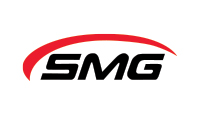We manage energy project development, environmental permitting, remediation and compliance, insustrial hygiene, health & safety, auditing, environmental management, government relations. We solve your problems in all of these areas. We move quickly and dig deeply to reach your goals. We work wherever you are.
How can SMG help you?
SMG POV
US Supreme Court Invalidates MATS for Power Plants
WRITTEN BY
Stewart W. McCollam, P.E.TAGGED
On Monday, June 29, 2015, the Supreme Court of the United States (SCOTUS) ruled 5-4 against the Environmental Protection Agency’s (EPA) implementation of Mercury and Air Toxics Standards (“MATS” /40 CFR Part 63 Subpart UUUUU ) rule that was promulgated in 2012 for electric utility steam generating utilities (EGUs). SCOTUS said the EPA incorrectly interpreted the statutory criteria for establishing emission standards for hazard air pollutants (HAPs) from EGUs and was inconsistent with Section 112 of the Clean Air Act (CAA / 42 USC §7412).
Specifically, EPA did not consider costs of achieving the emission reduction when establishing “beyond-the-floor” maximum achievable control technology (MACT) emission standards on mercury and other air toxics from EGUs as required by 42 USC §7412(d)(2). SCOTUS found that the EPA did not engage in “reasoned decision making” because the EPA promulgated a rule under section 112 of the CAA without considering costs in its initial decision to regulate HAP emissions from EGUs. EPA’s interpreted the term “appropriate” in 76 FR 24988 by saying “We further interpret the term ‘appropriate’ to not allow for the consideration of costs”. This interpretation led the Supreme Court to conclude that the agency did not “operate within the bounds of reasonable interpretation.” While EPA later evaluated costs in the rulemaking process when deciding the degree of emissions reduction promulgated in the final rule, the decision to not consider costs as in the initial regulatory mechanism is what led the Supreme Court to invalidate the MATS in its current form. Furthermore, the cost-benefit analysis performed by EPA in the MATS December 2011 regulatory impact analysis is widely disputed with respect to the economic benefits of the rule.
The decision doesn’t mean EGUs will never be subject to regulations on hazardous air pollutants. Instead, it means the EPA will have to revisit the rulemaking process and find some mechanism to consider the cost of achieving the emission reduction to the power industry in the initial decision phase of the rulemaking process.
Until another version of MATS is approved, power plants will not be required to meet emission standards promulgated under 40 CFR Part 63 Subpart UUUUU for their emissions of mercury, arsenic, chromium, and other air toxics. However, given that the compliance date of the MATS rule was April 16, 2015; many utility companies have already made important long-term capital decisions about the choice to comply with the MATS through use of new add-on controls, idle/shutdown existing coal-fired EGUs deemed too costly to retrofit, or transition to new natural gas fired EGUs. Moreover, many energy companies which have taken measures to transition to natural gas fired EGUs have publically stated they won’t reverse their decision to shut down their existing coal-fired EGUs based on the outcome of this case. Consequently, the late nature of the court ruling has reduced the immediate impact of the MATS rule to the energy industry but likely did little to change the overall trajectory of the industry’s transition from coal to natural gas fired EGUs.
Further complicating the situation are the looming court challenges to the proposed Clean Power Plan rules which regulates CO2 emissions from power plants under section 111(d) (Existing EGUs) and 111(b) (New/Modified/Reconstructed EGUs) of the CAA. The proposed rules require each state to reduce CO2 emissions from existing fossil fired EGUs and meet more stringent greenhouse gas (GHG) emission standards for New/Modified/Reconstructed EGUs. Section 111 of the CAA allows for regulation of existing sources for any air pollutant “for which air quality criteria have not been issued or which is not included on a list published under section 7408(a) of this title or emitted from a source category which is regulated under section 7412 of this title.” With the Section 112 (42 USC §7412) MATS rule invalidated, the section 111(d) Clean Power Plan proposed rule could move forward with less legal precedence to challenge its implementation.
Only time will tell how emission standards promulgated by EPA will be adjudicated by the federal court system. One thing is for certain, the path to the final rules that govern fossil fired EGU emissions will present more challenges to the regulated community.
FEATURED PROJECT
PROBLEM
A local company engaged in manufacturing imported a small amount of a chemical substance defined under TSCA. Faced with a potential EPA enforcement action with penalties assessed for noncompliance under TSCA of up to $32,500 per day per violation, the company called SMG for help.
SMG'S APPROACH
SMG analyzed the company’s current TSCA procedures and assisted the company in developing a proactive, cost-effective compliance procedure. SMG also facilitated a training program to educate employees about TSCA.
MG worked with the company to develop mechanisms that assured adherence with the policies that were being implemented for compliance. Procedures to promptly correct any potential violations and prevent future violations were also put into place.
RESULTS
SMG was able to show that the company complied with the relevant TSCA regulations and was improving their TSCA policies and procedures to assure that future issues were less likely to occur. The company was not subjected to the proposed penalties and now has mechanisms in place to maintain TSCA compliance.
